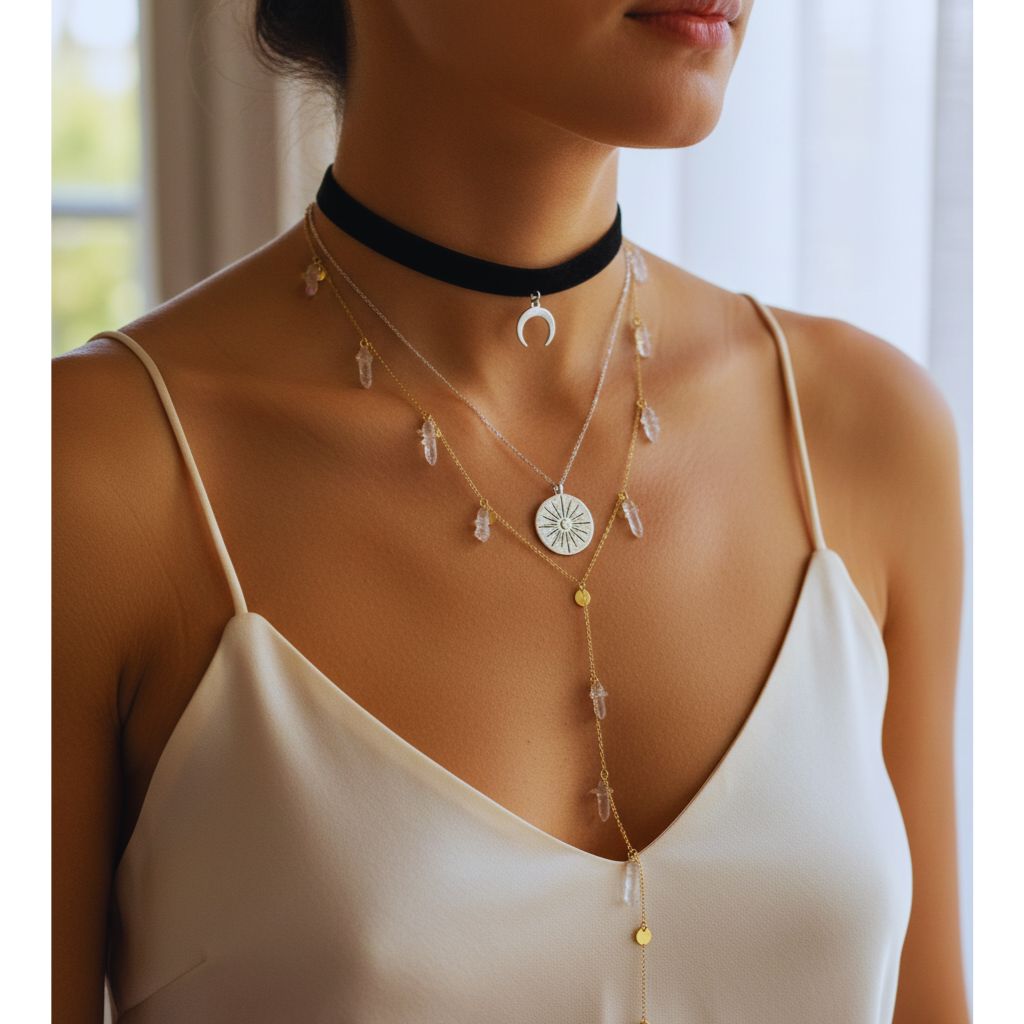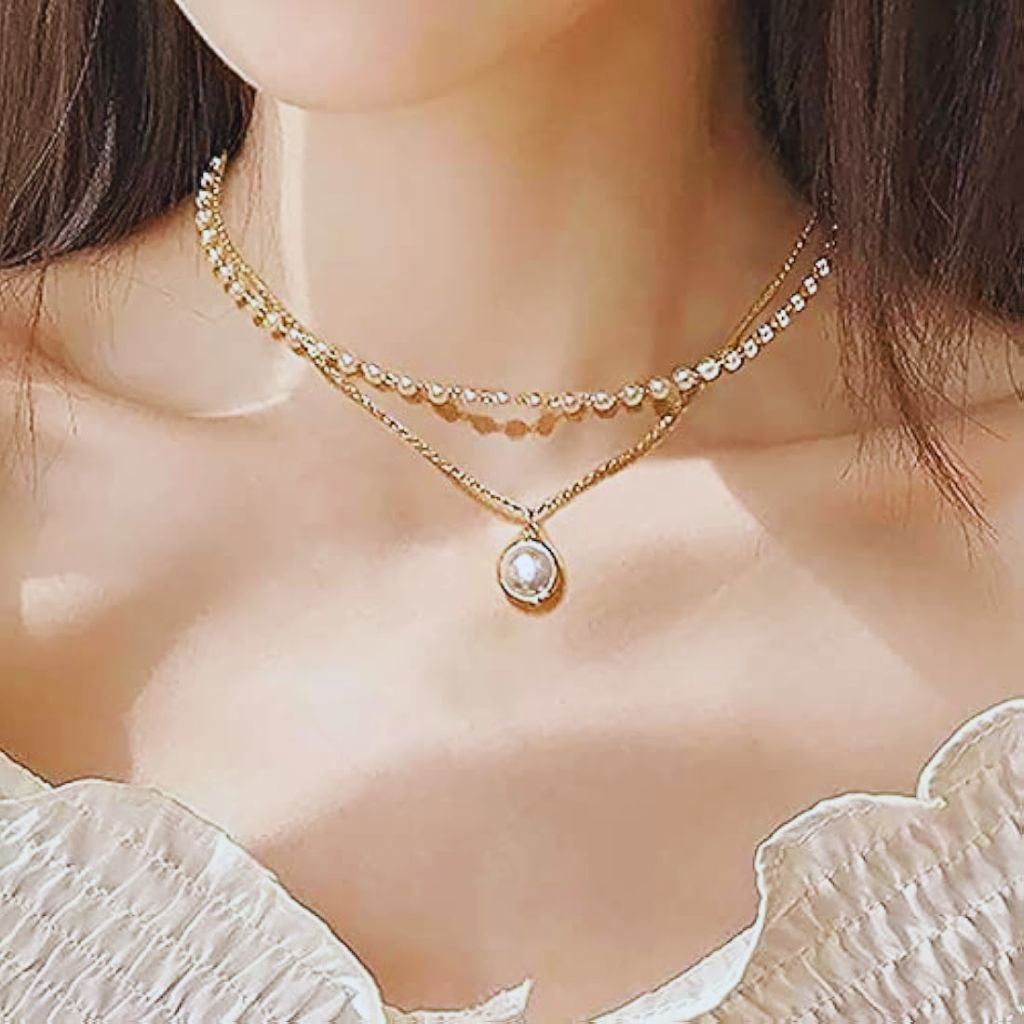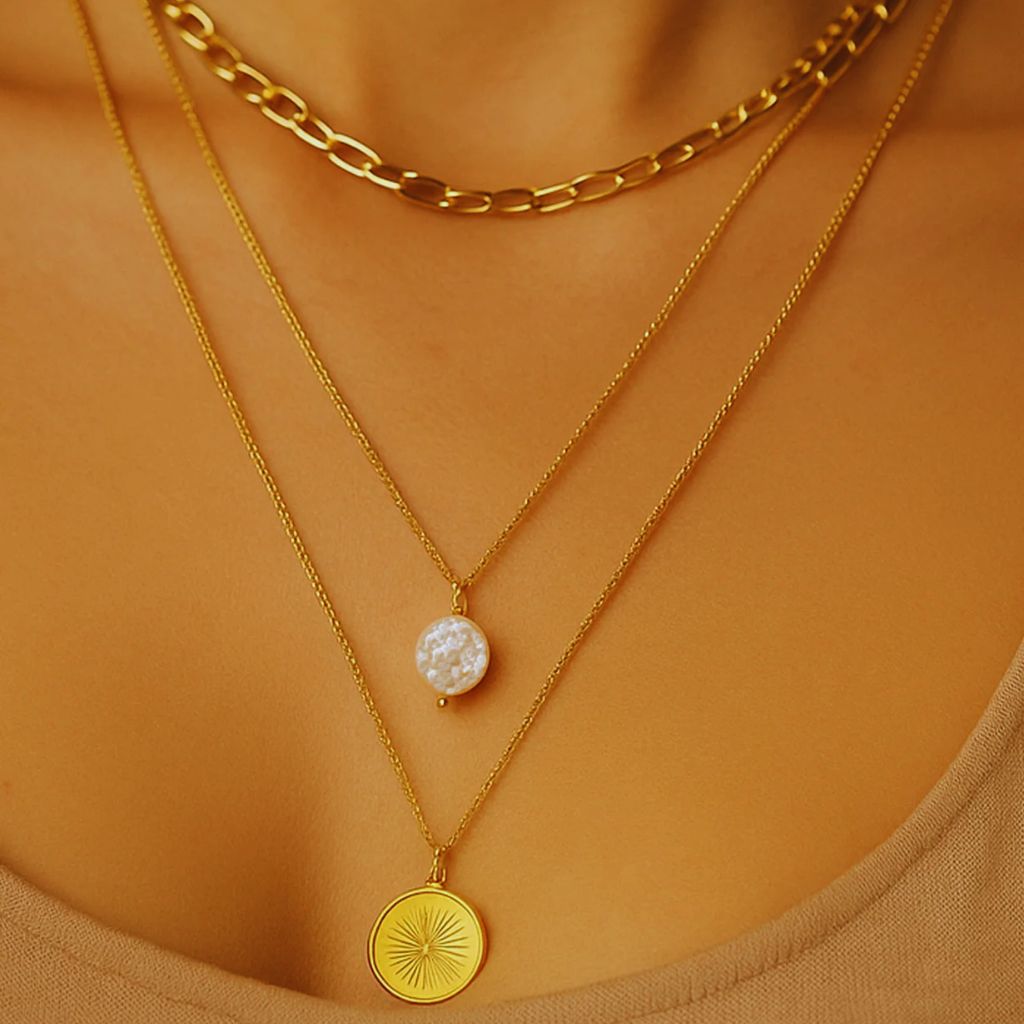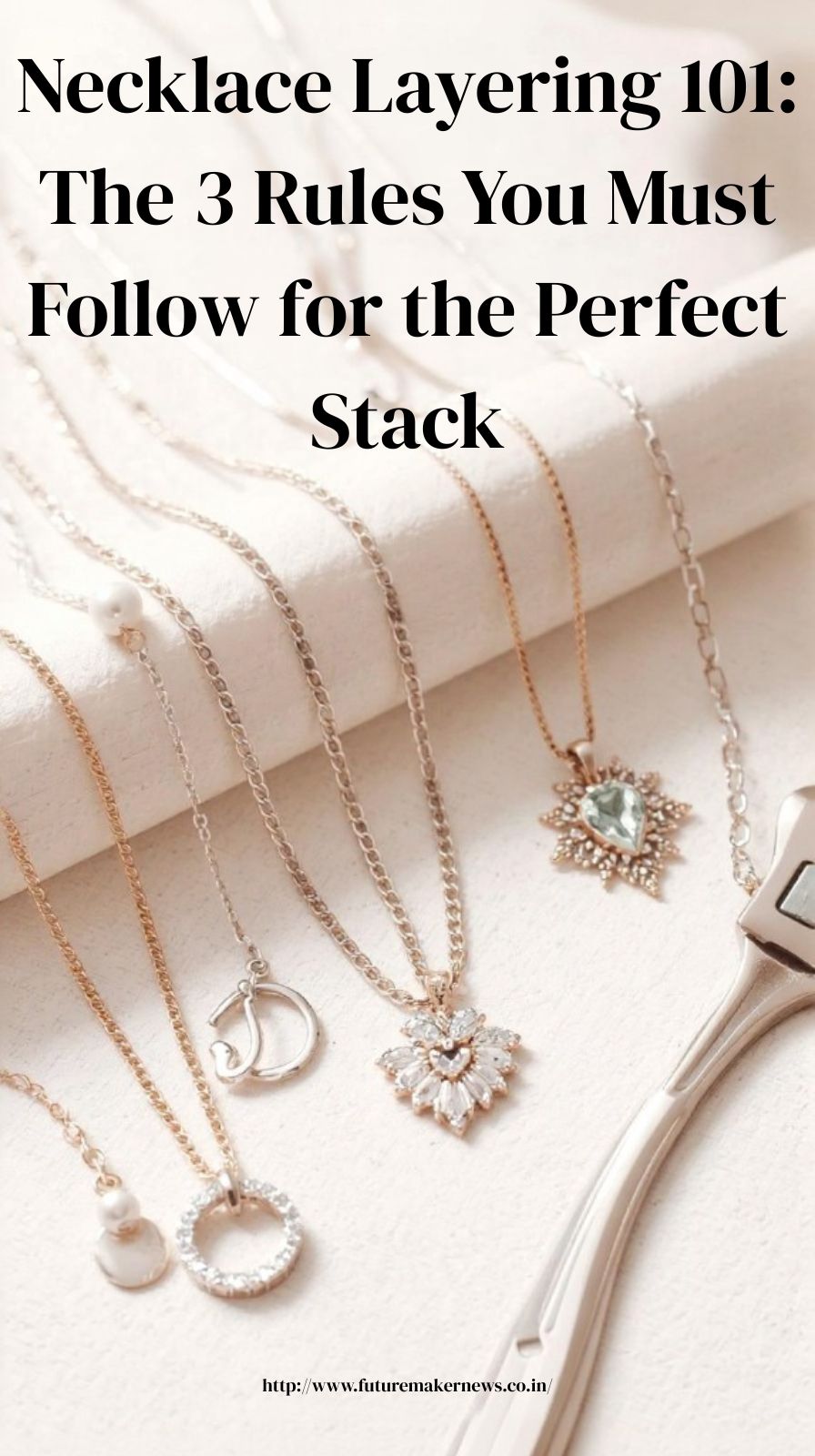Layered necklaces are more than just a trend — they’re a style statement. A perfectly stacked set of necklaces can instantly elevate any outfit, whether it’s a casual tee, a blazer, or a cocktail dress. But here’s the catch: layering necklaces incorrectly can look messy or cheap, turning a chic look into a tangled disaster.
The good news? Necklace layering is an art — and like any art, there are rules to master. By following just a few principles, you can create a polished, sophisticated look that feels effortless.
In this guide, we’ll dive into Necklace Layering 101, revealing the three essential rules you must follow for the perfect stack. Along the way, we’ll share tips, styling tricks, and expert insights on creating a balanced, fashionable necklace stack that’s perfect for every occasion.
Why Necklace Layering Matters
Layering necklaces is about depth, dimension, and personality. A single necklace can make a statement, but multiple layers show intention and creativity. When done right, necklace layering:
- Adds texture and visual interest to outfits
- Highlights your neckline and facial features
- Lets you mix personal pieces, from minimalist chains to statement pendants
- Elevates basic wardrobe staples into chic ensembles
But it’s easy to overdo it. The goal is effortless elegance, not cluttered chaos.
The 3 Rules You Must Follow for the Perfect Necklace Stack
No matter your style — minimalist, bohemian, or classic — these three rules will help you layer necklaces like a pro.
Rule 1: Vary the Lengths

One of the most important principles of necklace layering is length variation. Wearing multiple necklaces of the same length often results in them tangling or looking flat. Instead, create a graduated effect, where each necklace sits at a different height.
How to apply it:
- Choker (14–16 inches): Start with a close-to-the-neck chain. This could be a simple gold or silver chain or a delicate beaded piece.
- Medium-length necklace (18–20 inches): Add a slightly longer chain with a small pendant. This creates depth and draws the eye down the neckline.
- Long necklace (22–30 inches): Finish with a longer, statement chain. This adds drama and elongates your torso visually.
Tip for balance: Avoid more than five layers — any more can look heavy or crowded.
Why it works:
- Differing lengths prevent tangling
- Each piece gets noticed without competing
- Adds a professional, polished feel to your outfit
Rule 2: Mix Textures and Styles

The next secret to a perfect necklace stack is texture and style variation. Layering only delicate chains or multiple statement pieces can feel one-dimensional. Combining different textures adds interest and sophistication.
How to apply it:
- Delicate chains: Use thin gold or silver chains as the foundation. These are timeless and versatile.
- Beaded necklaces: Incorporate subtle beads or pearls for texture and a touch of femininity.
- Statement pendants: Add a pendant or charm to give the stack personality and focus.
- Mixed metals: Don’t be afraid to combine gold, silver, and rose gold — this creates a modern, curated vibe.
Pro tip: Keep your necklaces cohesive in style or color palette. For example, a minimalist stack might feature all thin chains with small pendants, while a boho stack could mix beads, charms, and chunky links.
Why it works:
- Adds dimension without clutter
- Reflects personality and personal style
- Makes the stack visually interesting from every angle
Rule 3: Play with Proportion

Proportion is crucial for a balanced necklace stack. This refers to how thick, delicate, or bold each chain is in relation to the others. Stacking necklaces of similar weight can look repetitive, while too much contrast can appear chaotic.
How to apply it:
- Start small: Begin with the thinnest chain closest to the neck.
- Gradually increase width or pendant size: The middle layers can feature slightly bolder chains or subtle charms.
- Finish with impact: The final, longest layer can be your statement piece — think chunky chain, oversized pendant, or an artistic design.
Tip for layering proportions: Combine one bold piece with two or three delicate chains for a harmonious look.
Why it works:
- Ensures visual balance
- Draws attention evenly across the stack
- Prevents the necklace set from looking too heavy or crowded
Additional Necklace Layering Tips
Beyond the three core rules, a few extra tricks can take your stack from “good” to Instagram-worthy.
- Consider neckline: The outfit you’re wearing dictates the best necklace arrangement. V-necks pair beautifully with layered pendants, while turtlenecks work with longer chains.
- Add personal touches: Incorporate sentimental charms, initials, or birthstones for a curated and meaningful stack.
- Mix lengths and metals cautiously: Too many colors can look chaotic; two-tone metals usually provide modern sophistication.
- Avoid over-accessorizing: Let your necklace stack shine — keep earrings and bracelets minimal to prevent competition.
- Check for tangling: Use jewelry clasps strategically and untangle chains before wearing to maintain a clean, polished look.
Perfect Necklace Stacking Combinations
To inspire your necklace layering journey, here are some tried-and-true combinations:
- Minimalist Chic: Thin gold choker + delicate mid-length chain + small pendant on a longer chain
- Boho Vibes: Beaded short chain + mixed metal mid-length + charm or crystal pendant long chain
- Statement Elegance: Pearl choker + thin chain + gold link long chain with pendant
- Modern Professional: Sleek silver chain + geometric pendant + thin link chain for length
Experimenting with styles, textures, and lengths allows you to express personality while following the three essential rules.
Why Layered Necklaces Are a Must in 2025
Layered necklaces aren’t just trendy; they’re timeless fashion tools. In 2025, fashion emphasizes:
- Personal expression through subtle luxury
- Minimalism paired with thoughtful details
- Mixing classic jewelry with modern styles
By mastering necklace layering, you can transform any outfit, whether it’s casual, professional, or evening wear.
Final Thoughts
Necklace layering is all about intentional style. Follow these three rules:
- Vary lengths to create depth
- Mix textures and styles for visual interest
- Play with proportion for balance
Once you master these, your necklace stack will look effortless, polished, and luxurious — even if it’s made from simple, everyday pieces.
Layering necklaces is more than accessorizing; it’s curating a personal style signature. Each chain, pendant, and charm tells a story, enhancing your look while reflecting your personality.
Embrace the art of necklace layering in 2025, and you’ll never underestimate the power of a perfectly stacked set again.

